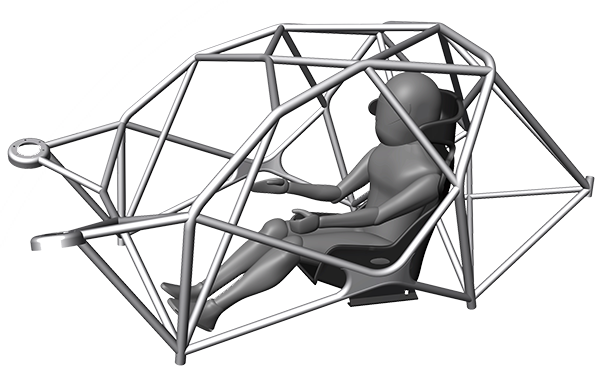One of the defining characteristics of any race car is its roll cage. It’s not only designed to be distinctive, but to do a job of protecting the driver in the event of a vehicle roll-over or crash. There are 3 main ways to fit a fully legal roll cage into a vehicle and they are
-
Using a prefabricated kit
-
Welding together a pre-bent kit or…
-
Customising your own from scratch
For the sake of this article we’re going to look at the latter. So if you’re considering having a go yourself, here are top ten tips to building a perfect roll cage you might want to follow.
1 – Legality – Naturally before you fit a roll cage you need to ensure it complies with all legalities. At Metro Steel for example our wide range of 350G CDW tubing complies with CAMS and CCDS specifications.
2 – The right materials – A quality roll cage always starts with the correct tubing. As a top tip, professionals tend to use 1.75 inch 4.45 cm diameter tubing as this offers the best degree of lightness and strength.
3 – Ensure best weld quality – Unless it’s welded properly, a roll cage may just be an expensive assembly of tubing. Roll cages are usually welded together with Tungsten Inert Gas (TIG) Welders or Metal Inert Gas (MIG) welders. In our opinion TIG welders are better because they produce a cleaner stronger joint with next to no splatter.
4 – Always use the sills – The easiest thing when building a roll cage is to sit it on the base of the car’s floor pan only. The problem with this is that it can easily tear if subjected to a hard roll-over. A better idea is to tie the cage into the vehicle’s boxed sills. This is carried out using ‘L’ shaped pads or foot boxes and creates perfect horizontal platforms to tie the main hoops into.
5 – Keep it tight – The problem with many ready built kits are that when finished they aren’t close enough to the body or skin of the vehicle. This means less room inside the vehicle for the driver, but also less protection. Conversely the best roll cage is one that buts up tight to the vehicle skin. In fact a great cage’s bars will be so close to the door seals that it becomes difficult to slide a piece of paper between the gap.
6 – Utilise the suspension pick-up points – A great roll cage is built for safety sure, but doesn’t hinder the car’s performance levels. For this reason tie the cage into as many suspension points as you can. This helps the vehicle corner flatter and limits the inherent chassis flexing that occurs when cornering at speed.
7 – Maintain maximum headroom – This ties in with point number 5. Always allow yourself maximum headroom when designing and building a roll cage. It makes the whole driving experience more comfortable and makes for easier access.
8- Ensure all tubes meet the hoop at the same point – To ensure best use of force transmission during a collision or roll-over the structure should always be ‘backed up’. In other words ensure all bars always join with the hoops at the same point. Doing so will better transmit the force of a roll-over, thus reducing the risk of roll cage failure.
9 – Ensure high knee bars – Although many roll cage designers fit knee bars, the trick is to have them as far away from your knees as possible. A good design will have the bar situated behind the dashboard. It can be fed through the back of the dashboard and bolted into position.
10 – Paint it – Okay, so paint won’t give your vehicle more protection, but it will look slicker, smarter, and more professional. So even though painting a roll cage is an exercise in contortion-ism and frustration, if you want a professional looking cage, it’s a job that needs to be done.
At Metro Steel, we can help you with your roll cage fabrication and design. Why not contact us on 07 3204 1000 or call into our Deception Bay fab shop about your requirements.
 Talk to an Expert (07) 3204 1000
Talk to an Expert (07) 3204 1000 Working Hours - Mon – Fri 7:30 AM – 4:30 PM
Working Hours - Mon – Fri 7:30 AM – 4:30 PM
